
The Tropical Paradise of Koh Phangan
Discover Koh Phangan: Thailand's island gem known for its stunning beaches, vibrant nightlife, and lush jungles. Experience the Full Moon Party and much more.
Koh Phangan is a stunning island located in the Gulf of Thailand. Known for its beautiful beaches, lush jungles, and vibrant nightlife, it offers a perfect blend of relaxation and adventure. The island is famous for its Full Moon Party, which attracts visitors from around the world. However, there are many other activities and sights to explore beyond the party scene. During the day, you can relax on pristine beaches like Haad Rin and Thong Nai Pan, or take a boat trip to the nearby Ang Thong Marine Park, a protected area with clear waters and diverse marine life. If you enjoy hiking, the island's interior is home to several waterfalls, such as Than Sadet and Phaeng Waterfall, where you can take a refreshing dip. For those interested in culture, Koh Phangan has several temples worth visiting, including Wat Phu Khao Noi, the oldest temple on the island. You can also explore local markets and sample delicious Thai cuisine, from street food to seafood restaurants. In the evening, head to the island's many beach bars and enjoy a cocktail while watching the sunset. Overall, Koh Phangan offers something for everyone, whether you're looking to party, relax, or explore the natural beauty of Thailand.
Local tips in Koh Phangan
- Visit during the Full Moon Party if you enjoy vibrant nightlife, but book accommodations well in advance as it gets very busy.
- Rent a scooter to explore the island at your own pace, but be cautious as some roads can be challenging.
- Bring mosquito repellent, especially if you plan to visit the island's lush jungles and waterfalls.
- Respect local customs and dress modestly when visiting temples.
- Try local dishes like pad thai, som tam (papaya salad), and fresh seafood at the night markets.
The Tropical Paradise of Koh Phangan
Koh Phangan is a stunning island located in the Gulf of Thailand. Known for its beautiful beaches, lush jungles, and vibrant nightlife, it offers a perfect blend of relaxation and adventure. The island is famous for its Full Moon Party, which attracts visitors from around the world. However, there are many other activities and sights to explore beyond the party scene. During the day, you can relax on pristine beaches like Haad Rin and Thong Nai Pan, or take a boat trip to the nearby Ang Thong Marine Park, a protected area with clear waters and diverse marine life. If you enjoy hiking, the island's interior is home to several waterfalls, such as Than Sadet and Phaeng Waterfall, where you can take a refreshing dip. For those interested in culture, Koh Phangan has several temples worth visiting, including Wat Phu Khao Noi, the oldest temple on the island. You can also explore local markets and sample delicious Thai cuisine, from street food to seafood restaurants. In the evening, head to the island's many beach bars and enjoy a cocktail while watching the sunset. Overall, Koh Phangan offers something for everyone, whether you're looking to party, relax, or explore the natural beauty of Thailand.
When is the best time to go to Koh Phangan?
Iconic landmarks you can’t miss
Haad Rin
Explore Haad Rin, a vibrant beach paradise in Ko Pha-ngan, renowned for its stunning sunsets, lively Full Moon parties, and rich local culture.
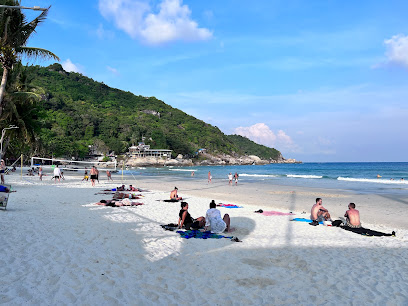
Anantara Rasananda Koh Phangan Villas
Experience unparalleled luxury and tranquility at Anantara Rasananda Koh Phangan Villas, a tropical paradise on the shores of Thong Nai Pan Noi Beach.
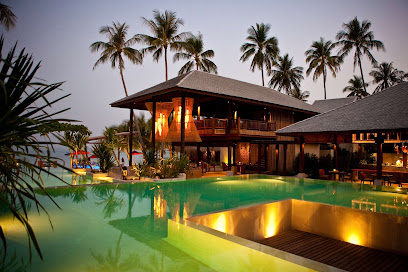
Hollystone
Experience the vibrant nightlife of Ko Pha-ngan at Hollystone, the island's premier bar and dance club, where unforgettable memories await.

Tiki Beach - Resort, Beach Bar, Restaurant, Co-working
Experience the perfect blend of relaxation and adventure at Tiki Beach, Koh Phangan's premier resort hotel, beach bar, and co-working space.
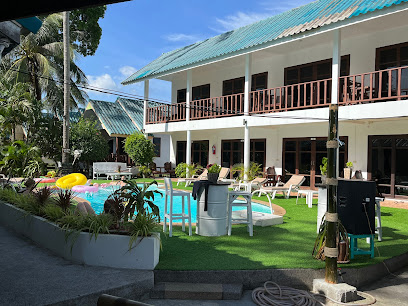
Wonderland Healing Center
Experience tranquility and holistic wellness at Wonderland Healing Center in Koh Phangan, a perfect retreat for yoga enthusiasts and health seekers.
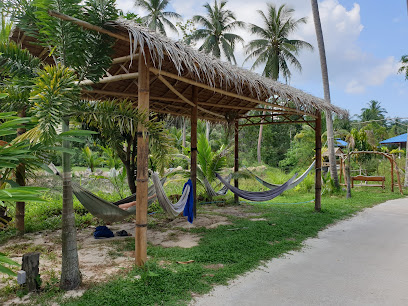
A's Famous
Discover A's Famous on Ko Pha-ngan, where American-style comfort food meets the island's vibrant atmosphere, perfect for breakfast, brunch, and more.
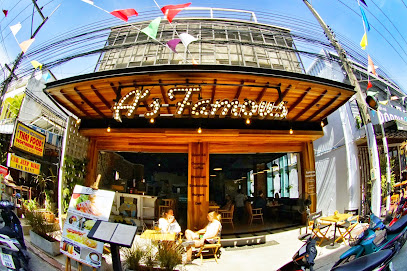
Sound Garden
Experience the vibrant nightlife of Ko Pha-ngan at Sound Garden, a bar known for its creative cocktails, stunning views, and lively atmosphere.
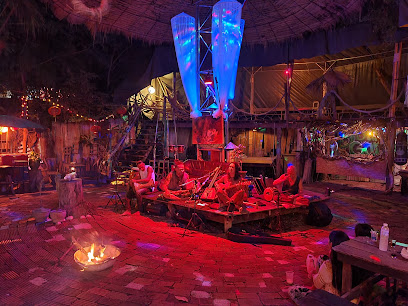
Cool Runnings... Restaurant
Discover the delightful flavors of Thai cuisine at Cool Runnings... Restaurant in Koh Pha-ngan, where fresh ingredients meet vibrant atmosphere.
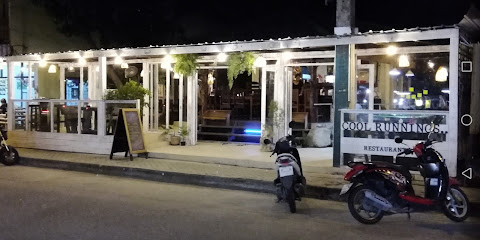
Vagabond Temple Yoga Meditation Healing
Discover tranquility and holistic healing at Vagabond Temple, Koh Phangan's premier yoga retreat center, where your wellness journey begins.
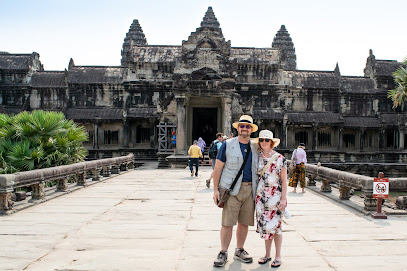
The Nest
Discover a world of fun and imagination at The Nest, Koh Pha-ngan's premier indoor playground for children and families.

Plongée Koh Phangan Diving
Experience the vibrant underwater world at Plongée Koh Phangan Diving, where adventure meets expert guidance in paradise.
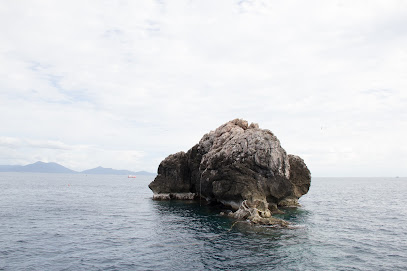
Inner Walk
Discover tranquility and self-discovery at Inner Walk, a premier meditation center in the serene landscapes of Koh Phangan, Thailand.
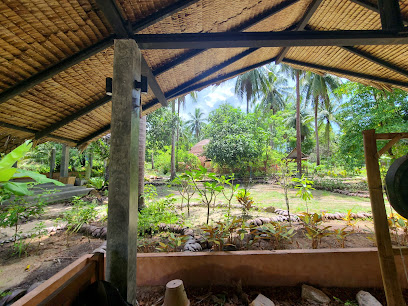
Khao Ra
Experience breathtaking views and natural beauty at Khao Ra, the highest peak on Ko Pha-ngan, a paradise for adventure seekers and nature lovers.
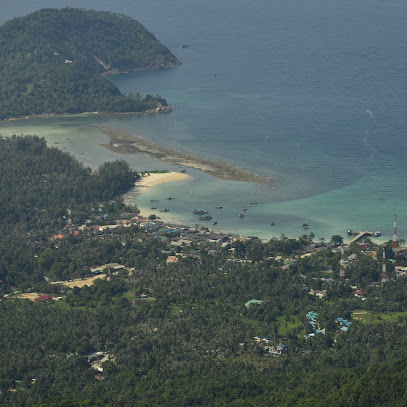
Asia Blue Tours - Thong Sala
Explore the breathtaking beauty of Koh Phangan with Asia Blue Tours, your ultimate travel partner for unforgettable adventures in Thailand's tropical paradise.
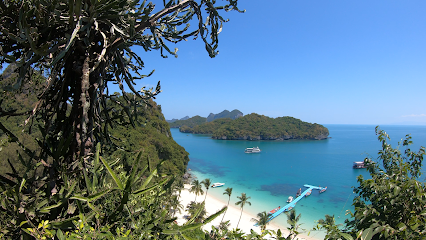
Phanganist.com
Explore Ko Phangan's vibrant culture and events with Phanganist.com, your ultimate guide to unforgettable travel experiences on the island.
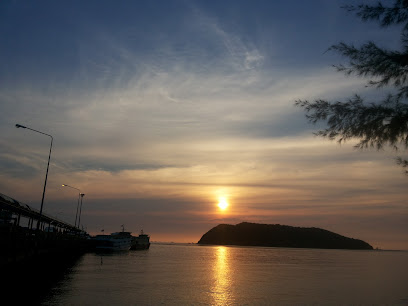
Unmissable attractions to see
Magical Forest by Halfmoon Festival
Experience the enchanting vibe of the Magical Forest by Halfmoon Festival in Ko Pha-ngan, where music, art, and nature unite under the full moon.
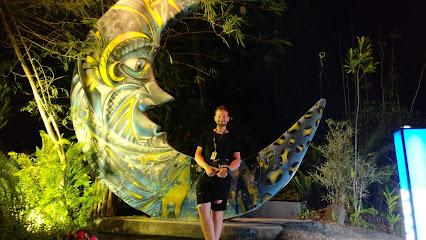
Zen Beach
Discover the serene beauty of Zen Beach on Ko Pha-ngan, where stunning sunsets and a peaceful atmosphere await every traveler.
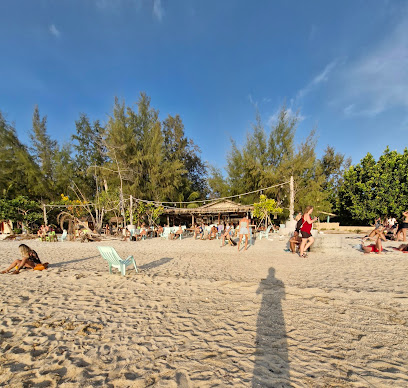
Ash Tailor Samui
Experience the art of bespoke tailoring at Ash Tailor Samui, where each garment is crafted to perfection in the heart of Koh Samui.

Wang Sai
Experience the breathtaking natural beauty of Wang Sai Waterfall in Koh Pha-ngan, a perfect escape for nature lovers and adventurers alike.

Zoo Cafe
Discover the serene charm of Zoo Cafe near Phaeng Waterfall on Ko Pha-ngan, where nature meets delightful culinary experiences.

Haad Yuan Beach
Discover the tranquil beauty of Haad Yuan Beach, a hidden paradise in Surat Thani, Thailand, perfect for relaxation and vibrant beach life.

Wat Maduea Wan
Explore the serene beauty of Wat Maduea Wan, a hidden Buddhist temple in Ko Pha-ngan offering a peaceful escape and cultural insight.
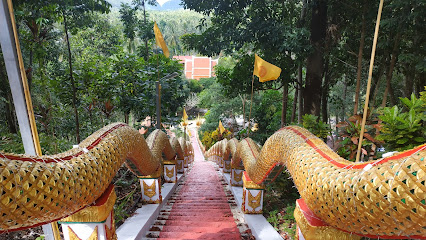
Paradise Waterfall
Explore the stunning Paradise Waterfall in Ko Pha-ngan, a serene escape surrounded by lush jungles, perfect for relaxation and unforgettable memories.

Wat Phu Khao Noi
Experience the serene beauty and spiritual ambiance of Wat Phu Khao Noi, a hidden gem of Ko Pha-ngan's rich cultural heritage.
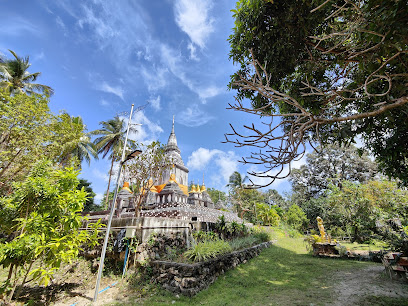
Wat Na Phra Lan
Experience the serene beauty and cultural richness of Wat Na Phra Lan, a hidden gem in Ko Samui's spiritual landscape.
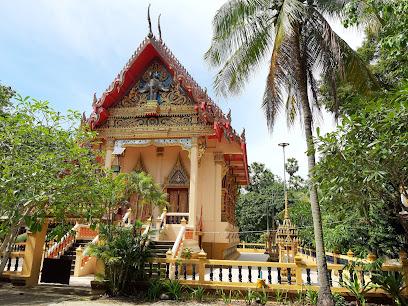
Trekking
Explore the breathtaking trekking trails of Ko Pha-ngan, where nature's beauty and adventure intertwine in a tropical paradise.
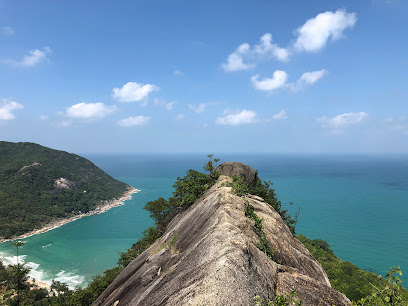
Hin Kong Beach
Experience the tranquil beauty and vibrant culture of Hin Kong Beach on Ko Pha-ngan, a perfect paradise for relaxation and exploration.
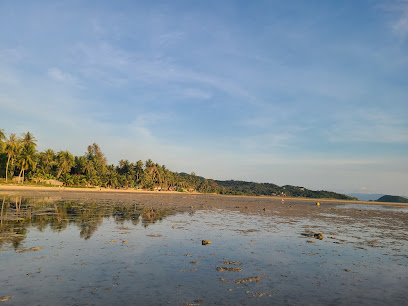
Wat Samai Kongka
Explore the serene Wat Samai Kongka temple in Ko Pha-ngan, a beautiful blend of spirituality, culture, and stunning Thai architecture.
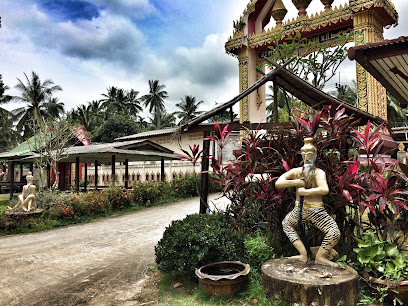
Ban Chalok Lam
Experience the tranquil beauty and vibrant local culture of Ban Chalok Lam, a hidden gem on Ko Pha-ngan, Thailand.
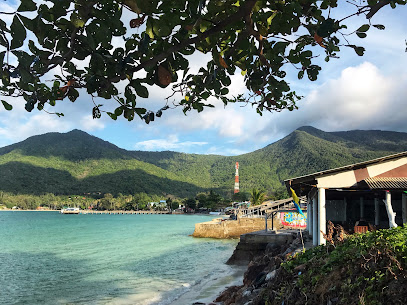
Khao Ra
Explore the breathtaking beauty of Khao Ra, Ko Pha-ngan's highest peak, offering stunning views and an unforgettable hiking experience in Thailand's nature preserve.
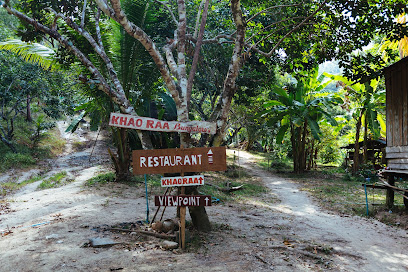
Essential places to dine
Alcove
Discover Alcove: A beachfront restaurant in Koh Phangan offering exquisite dishes with stunning ocean views.
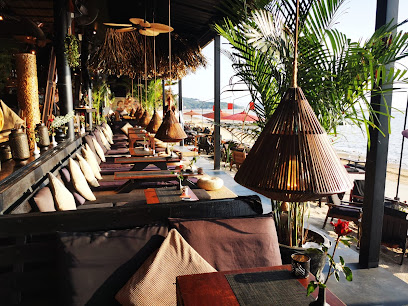
Fisherman's Restaurant and Bar
Experience exquisite seafood dining at Fisherman's Restaurant and Bar on Koh Phangan – where fresh catches meet stunning ocean views.
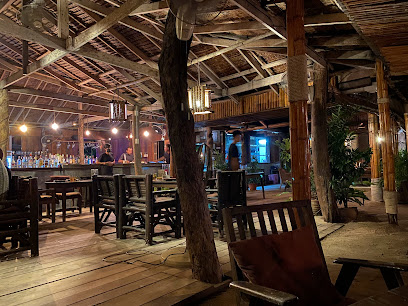
Pum Pui Restaurant
Discover authentic Thai flavors at Pum Pui Restaurant in Koh Pha-ngan - a culinary haven with vibrant dishes and welcoming ambiance.
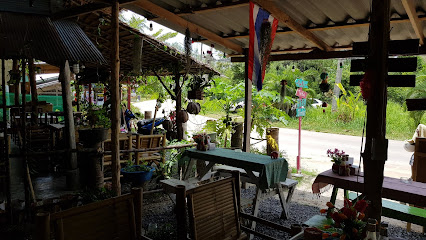
Ying Ying's kitchen
Discover authentic Thai flavors at Ying Ying's Kitchen in Ko Pha-ngan - a cozy dining destination loved by locals and tourists alike.
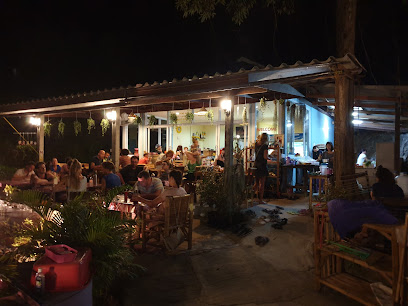
Siri’s island café
Discover authentic Thai flavors at Siri's Island Café in Ko Pha-ngan – a culinary haven with budget-friendly delights.
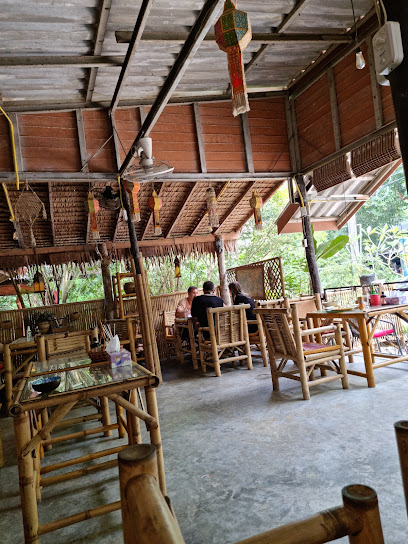
Auntie's Restaurant
Discover authentic Thai flavors at Auntie's Restaurant in Ko Pha-ngan - where every dish tells a story.
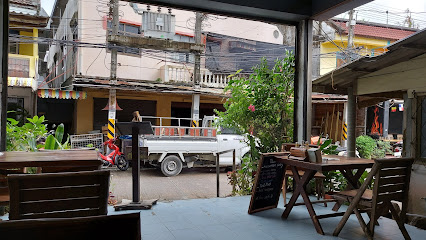
Luna Restaurant
Experience exquisite fusion cuisine at Luna Restaurant in Koh Phangan - where modern French meets traditional Thai flavors amidst stunning views.
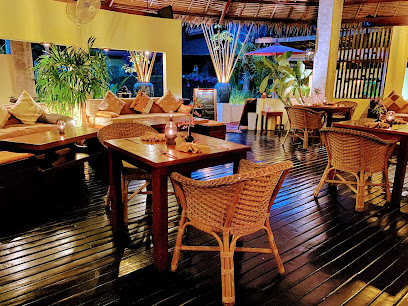
Ratatouille
Discover culinary excellence at Ratatouille - where German precision meets Italian flair amidst the tropical charm of Ko Pha-ngan.

Moonsoon’s Restaurant
Experience authentic Thai flavors at Moonsoon's Restaurant in Koh Phangan – where every dish tells a story of culinary tradition.
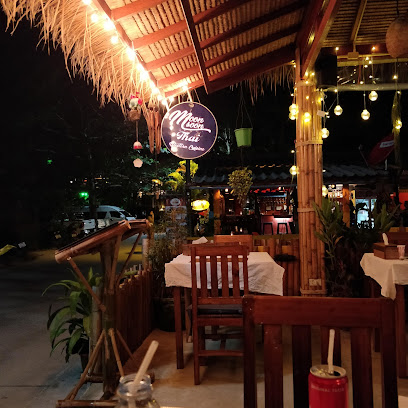
Nong View Restaurant
Discover stunning views and authentic Thai flavors at Nong View Restaurant in Ko Pha-ngan.

Jumpahom
Discover authentic Thai cuisine at Jumpahom in Ko Pha-ngan - where every dish tells a story and flavors come alive.
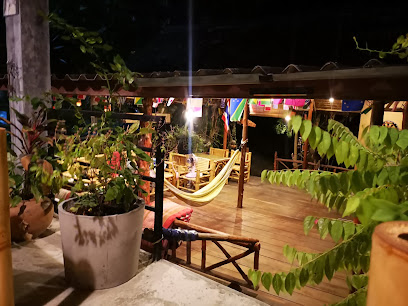
TUKTA THAI FOOD
Discover authentic Thai cuisine at Tukta Thai Food in Koh Phangan - where every dish tells a story of flavor and tradition.
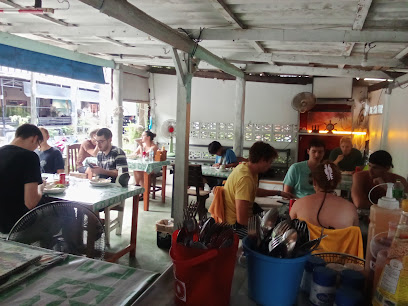
Friends Cafe
Experience delicious international cuisine and local flavors at Friends Cafe in Ko Pha-ngan's scenic Ban Tai area.

Beachlounge
Experience the perfect blend of French and Thai cuisine at Beachlounge in Koh Phangan, where every meal comes with stunning sea views.
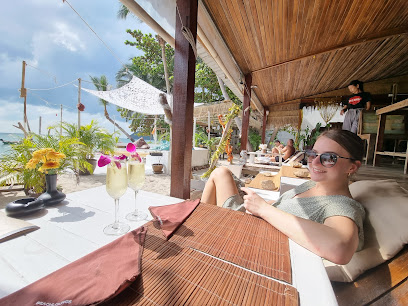
Restaurant Sunshine
Discover authentic Thai flavors at Restaurant Sunshine in Koh Pha-ngan – where fresh ingredients meet friendly service in a vibrant setting.
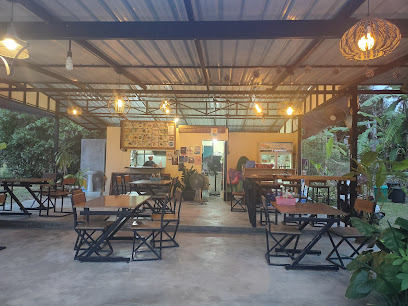
Markets, malls and hidden boutiques
Makalulu by ATMAN
Discover unique fashion and local artistry at Makalulu by ATMAN, a must-visit boutique in Koh Phangan, Thailand.

Moontribe Concept Store
Explore Moontribe Concept Store in Ko Pha-ngan for a unique blend of fashion, art, and local culture, perfect for discerning tourists.
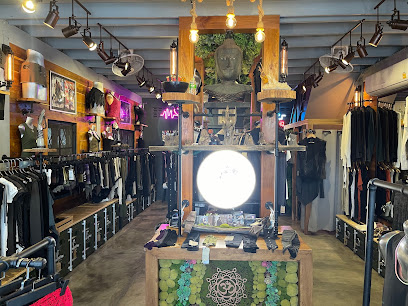
Refilling(refill grocery shop) ร้านชำรีฟิลลิ่ง
Discover the eco-friendly charm of Refilling in Koh Phangan – your sustainable grocery destination for local products and delightful chocolates.
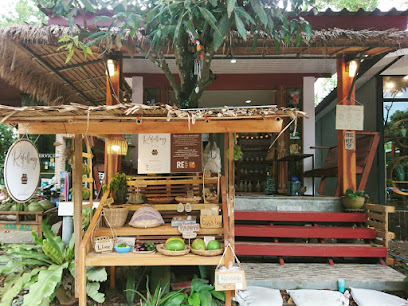
Magic Stones
Explore Magic Stones in Ko Pha-ngan for exquisite jewelry and rare gemstones that embody the island's natural beauty.
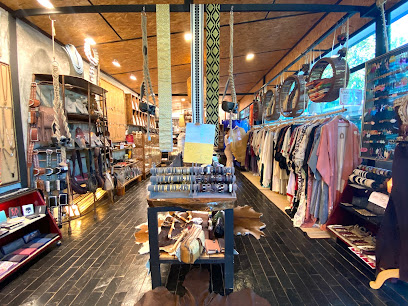
Matahari silk creations
Discover unique, handcrafted silk garments at Matahari Silk Creations in Koh Phangan, where local artistry meets tropical fashion.
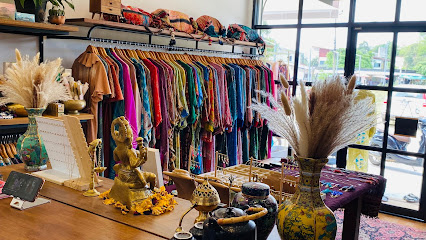
Dani summer store
Explore the vibrant fashion scene at Dani Summer Store in Koh Phangan, where unique clothing meets island charm.
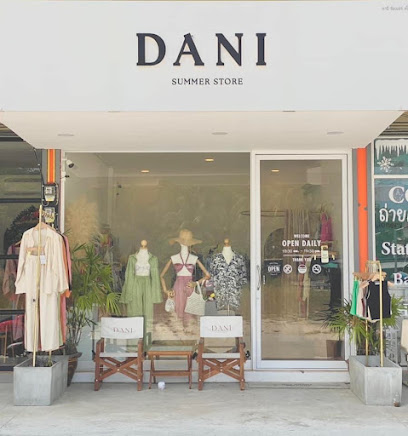
Crealab108 Psychedelic UV Tapestries and Clothing store
Discover Crealab108 in Ko Pha-ngan, where psychedelic UV tapestries and unique clothing fuse to create an unforgettable shopping experience.
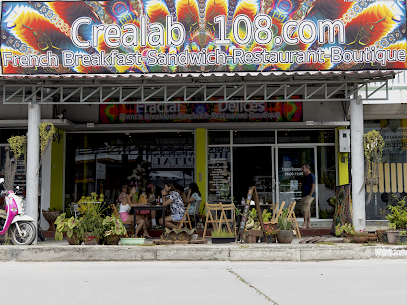
Fusion Fashion
Discover unique clothing and accessories that reflect the vibrant culture of Koh Phangan at Fusion Fashion.
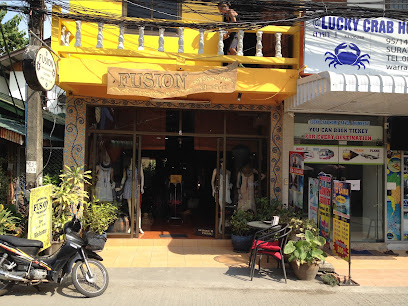
Gypsy shop
Discover the charm of secondhand shopping at the Gypsy Shop in Ko Pha-ngan, where vintage meets unique in a delightful treasure trove.
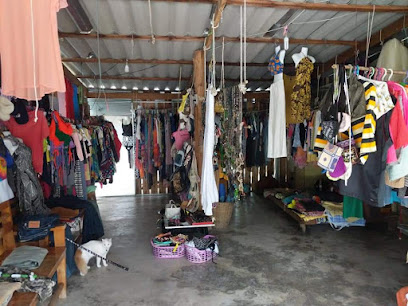
Scuba Wear
Dive into adventure at Scuba Wear, your destination for unique and stylish dive gear in the heart of Koh Phangan.
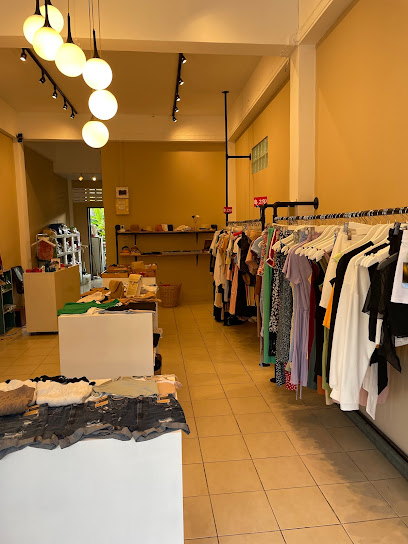
Rose de Boheme Boutique
Discover unique fashion and accessories at Rose de Boheme Boutique in the heart of Ko Pha-ngan, perfect for tourists seeking local style.
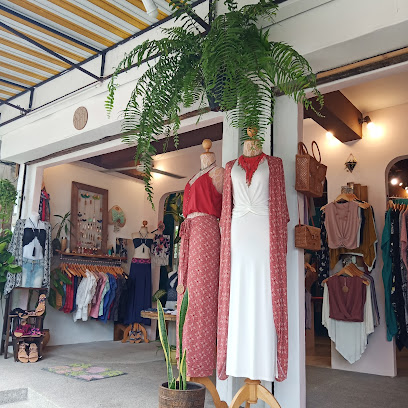
Number 1 Store
Explore Number 1 Store in Koh Phangan for unique clothing, exquisite jewelry, and delightful confectioneries that embody the island's spirit.
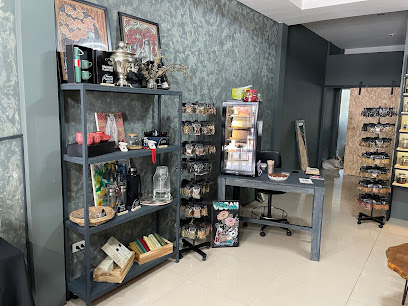
เล็กอาร์ท Lekart shop
Explore the vibrant craftsmanship of Thailand at Lekart Shop, where unique leather goods and artisanal fashion await your discovery.
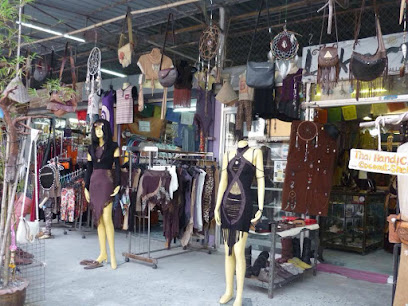
PACS Charity Shop
Explore PACS Charity Shop in Ko Pha-ngan for unique thrift finds that support local causes and reflect the island's vibrant culture.
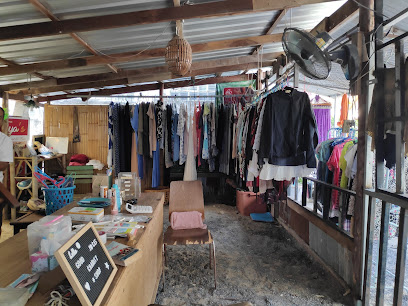
Jai Yen
Discover the beauty of handmade jewelry at Jai Yen, a unique boutique in Koh Phangan offering exquisite pieces that embody local artistry.
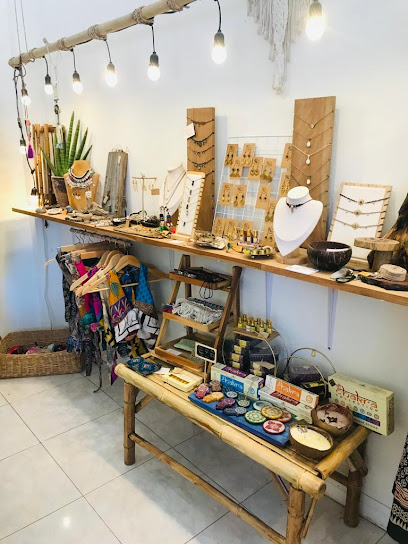
Essential bars & hidden hideouts
SOHO Bar Phangan
Discover SOHO Bar Phangan: A lively bar and Mexican restaurant perfect for unwinding with friends, great food, and refreshing drinks in Koh Phangan.
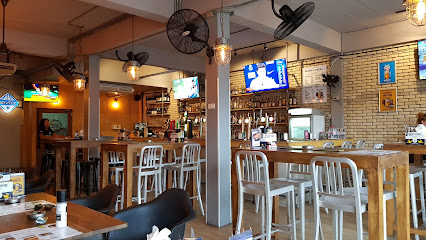
Top Rock Bar
Experience the vibrant atmosphere and breathtaking views at Top Rock Bar on Ko Pha-ngan, where delicious food meets stunning sunsets.
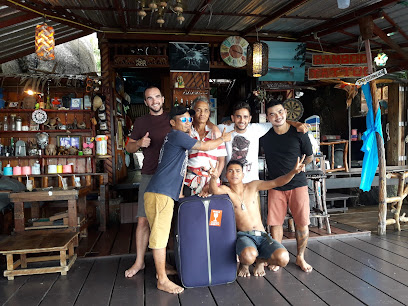
2C Bar
Experience the vibrant atmosphere of 2C Bar on Ko Pha-ngan, where stunning views and refreshing drinks create the perfect tropical escape.
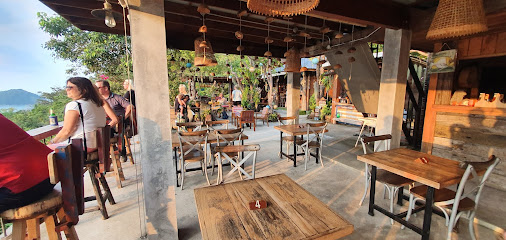
Knockout
Experience the vibrant nightlife at Knockout, Koh Phangan's premier cannabis club and bar, where good vibes and live music await!
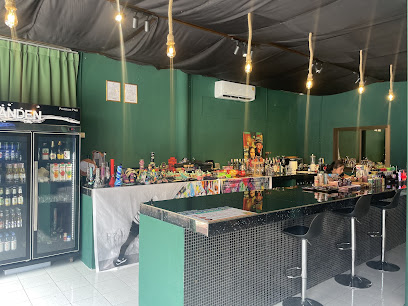
Hide on High
Discover the tranquil oasis of Hide on High, where breathtaking views and refreshing drinks await you on the enchanting island of Ko Pha-ngan.
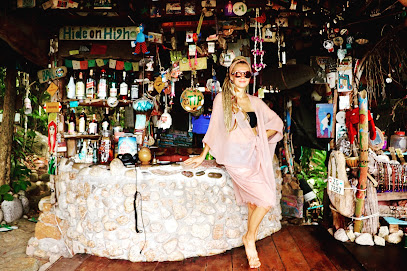
The Heaven Bar
Discover Heaven Bar on Ko Pha-ngan for stunning views, refreshing drinks, and a laid-back vibe in a tropical paradise.
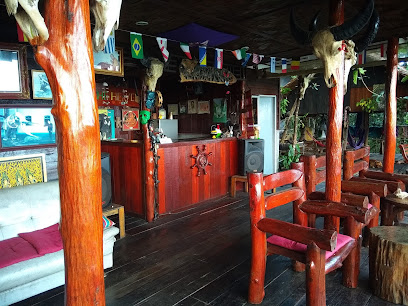
Coral Bar
Discover the tranquil charm of Coral Bar in Koh Phangan, where refreshing drinks meet stunning coastal views.

One Love Bar
Experience vibrant nightlife at One Love Bar in Ko Pha-ngan, where stunning beach views and refreshing cocktails come together for an unforgettable evening.
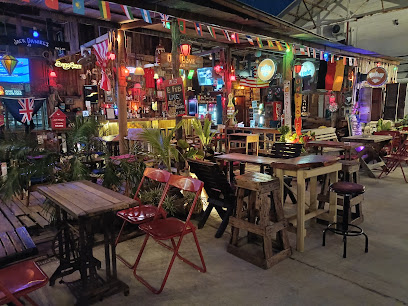
The Ugly Duckling
Discover the warmth of Irish hospitality at The Ugly Duckling, a vibrant pub in Ko Pha-ngan offering delicious food, drinks, and live entertainment.
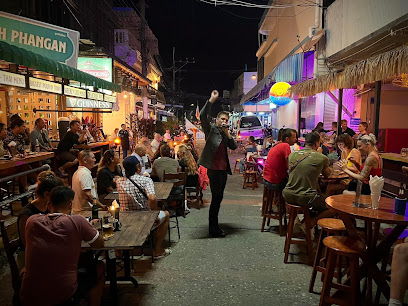
The Whiski Bar
Discover the vibrant flavors of The Whiski Bar in Ko Pha-ngan, where grilled delicacies meet a lively atmosphere for an unforgettable dining experience.
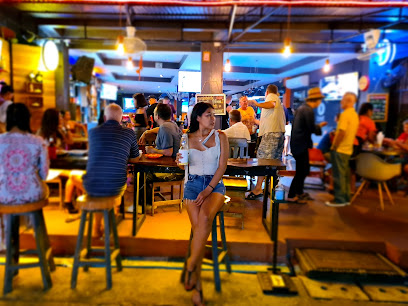
2nd Floor-Sunset Bar
Experience the enchanting sunsets and vibrant atmosphere at 2nd Floor-Sunset Bar, a must-visit location on Ko Pha-ngan for unforgettable evenings.
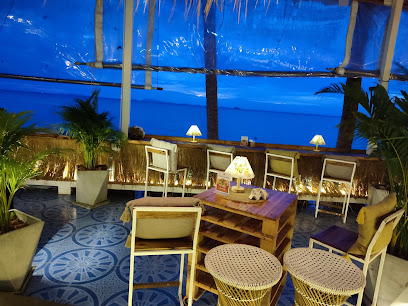
Sound Garden
Discover the lively nightlife of Ko Pha-ngan at Sound Garden, a vibrant bar offering delicious cocktails and unforgettable musical experiences.
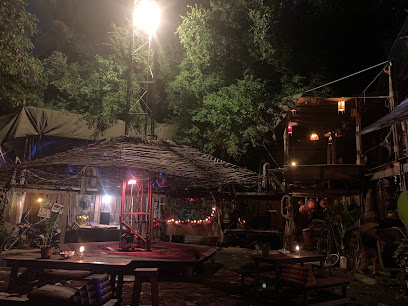
Heaven Beach Bar
Experience the perfect blend of relaxation and adventure at Heaven Beach Bar in Ko Pha-ngan, where stunning views meet delightful flavors.
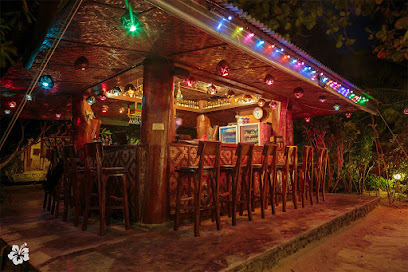
Three Monkey Bar
Experience the vibrant energy of Three Monkey Bar in Koh Phangan, where delicious cocktails and live music create the perfect island getaway.
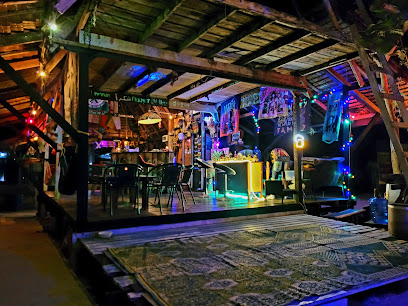
Sand Bar
Discover the vibrant and relaxed atmosphere of Sand Bar in Koh Phangan, where stunning sunsets and refreshing drinks create unforgettable memories.

Local Phrases about Koh Phangan
-
- Helloสวัสดี
[sawasdee] - Goodbyeลาก่อน
[laa kawn] - Yesใช่
[chai] - Noไม่
[mai] - Please/You're welcomeโปรด/ยินดี
[proht/yindee] - Thank youขอบคุณ
[kop khun] - Excuse me/Sorryขอโทษ
[kaw toht] - How are you?สบายดีไหม
[sabai dee mai] - Fine. And you?สบายดีค่ะ คุณล่ะ
[sabai dee ka khun la] - Do you speak English?พูดภาษาอังกฤษได้ไหม
[poot phasa angkrit dai mai] - I don't understandฉันไม่เข้าใจ
[chan mai kao jai]
- Helloสวัสดี
-
- I'd like to see the menu, pleaseขอดูเมนูหน่อยค่ะ
[kor doo menu noi ka] - I don't eat meatฉันไม่กินเนื้อ
[chan mai gin nuea] - Cheers!ชนสุด
[chon sut] - I would like to pay, pleaseชำระเงินหน่อยค่ะ
[cham ra ngoen noi ka]
- I'd like to see the menu, pleaseขอดูเมนูหน่อยค่ะ
-
- Help!ช่วยด้วย
[chuai duay] - Go away!ไปทางไหน
[pai tang nai] - Call the Police!โทรตำรวจ
[tor tamruat] - Call a doctor!โทรหมอ
[tor mor] - I'm lostฉันหลงทาง
[chan long tang] - I'm illฉันไม่สบาย
[chan mai sabai]
- Help!ช่วยด้วย
-
- I'd like to buy...ฉันอยากซื้อ...
[chan yahk sue] - I'm just lookingฉันแค่ดู
[chan kae doo] - How much is it?ราคาเท่าไหร่
[ra kah tao rai] - That's too expensiveแพงเกินไป
[paeng gein pai] - Can you lower the price?ลดราคาได้ไหม
[lot ra kah dai mai]
- I'd like to buy...ฉันอยากซื้อ...
-
- What time is it?ตอนนี้เวลากี่
[ton nee welah kee] - It's one o'clockเป็นหนึ่งโมง
[pen neung mong] - Half past (10)สามทุ่ม
[sam tum] - Morningเช้า
[chao] - Afternoonบ่าย
[bai] - Eveningเย็น
[yen] - Yesterdayเมื่อวาน
[meua wan] - Todayวันนี้
[wan nee] - Tomorrowพรุ่งนี้
[proong nee] - 1หนึ่ง
[neung] - 2สอง
[song] - 3สาม
[sam] - 4สี่
[see] - 5ห้า
[ha] - 6หก
[hok] - 7เจ็ด
[jet] - 8แปด
[paet] - 9เก้า
[gao] - 10สิบ
[sip]
- What time is it?ตอนนี้เวลากี่
-
- Where's a/the...?...อยู่ที่ไหน
[...yoo tee nai] - What's the address?ที่อยู่คืออะไร
[tee yoo keu arai] - Can you show me (on the map)?ช่วยแสดงที่บนแผนที่ได้ไหม
[chuai sa-dang tee bon pae natee dai mai] - When's the next (bus)?เวลาเดินรถต่อไปเมื่อไหร่
[welaa dern roht tor pai meua rai] - A ticket (to ....)ตั๋ว (ไป ...)
[dtua (pai ...)]
- Where's a/the...?...อยู่ที่ไหน
History of Koh Phangan
-
Koh Phangan's history dates back thousands of years when it was first settled by Malay fishermen. The island's name is derived from 'ngan,' which means 'sand bar' in the southern Thai dialect, indicating the island's sandy geography. Archaeological evidence suggests that early inhabitants lived a relatively simple life, relying on fishing and basic agriculture to survive.
-
One of the oldest and most significant landmarks in Koh Phangan is Wat Phu Khao Noi, a Buddhist temple thought to have been established in the late 14th century. This temple is notable for its hilltop location and panoramic views. It is a testament to the spread of Buddhism across Thailand and the island's importance as a spiritual center. Monks from this temple have long played a vital role in the community, offering spiritual guidance and education to the local population.
-
During the 17th and 18th centuries, Koh Phangan was a haven for pirates who used the island's hidden coves and lush jungles as hideouts. Thong Nai Pan, a secluded bay on the northeastern coast, was particularly favored by these seafarers. The bay’s geography provided excellent concealment from pursuing naval forces and merchant ships. Artifacts and relics from this era have been discovered, shedding light on the island's swashbuckling past.
-
Koh Phangan holds a special place in Thai royal history, especially during the reign of King Rama V (Chulalongkorn). The king visited the island several times in the late 19th and early 20th centuries, captivated by its natural beauty and tranquility. He even inscribed his initials on a rock at Thaan Sadet Waterfall, a site that has since become a revered historical landmark. The royal visits significantly boosted the island's prominence and paved the way for future tourism.
-
In the 1980s, Koh Phangan gained global attention with the advent of the Full Moon Party. What started as a small gathering of backpackers on Haad Rin Beach has transformed into one of the world's most famous beach parties, attracting thousands of revelers each month. The event has become a symbol of the island's vibrant nightlife and has played a crucial role in shaping its modern tourism industry.
-
In recent years, Koh Phangan has made significant strides in environmental conservation. With growing awareness of the impacts of tourism, local communities and organizations have initiated various projects to preserve the island's natural beauty. Efforts include marine conservation programs, waste management improvements, and sustainable tourism practices. These initiatives aim to protect the island's rich biodiversity and cultural heritage for future generations.
Koh Phangan Essentials
-
Koh Phangan is an island located in the Gulf of Thailand. The nearest international airport is Samui International Airport on the neighboring island of Koh Samui. From there, you can take a ferry to Koh Phangan, which takes about 30 to 45 minutes. Alternatively, you can fly into Surat Thani Airport on the mainland and take a bus to Donsak Pier, followed by a ferry to Koh Phangan, a journey that typically takes around 4 to 5 hours.
-
On Koh Phangan, the most common modes of transportation are motorbikes and scooters, which can be rented from various shops around the island. Taxis and songthaews (shared pick-up trucks) are also available for hire, but rates can be high. For those who prefer to explore at their own pace, renting a car is another option. Bicycles are available for rent, offering an eco-friendly way to explore the island.
-
The official currency in Thailand is the Thai Baht (THB). Credit cards are accepted at most hotels, restaurants, and larger shops, but many smaller establishments and local markets operate on a cash-only basis. ATMs are widely available on the island, so it’s advisable to carry some cash for smaller transactions and remote areas.
-
Koh Phangan is generally a safe destination for tourists. However, it’s important to take standard precautions. Avoid leaving your valuables unattended, especially on the beach. The area around Haad Rin, known for its Full Moon Party, can get crowded and chaotic, so be particularly vigilant with your belongings. Petty theft and pickpocketing can occur in crowded places, so always stay aware of your surroundings.
-
In case of emergency, dial 191 for police assistance or 1669 for medical emergencies. Koh Phangan has a hospital and several clinics that can handle minor health issues. It is highly recommended to have travel insurance that covers medical emergencies. Pharmacies are available on the island for over-the-counter medications. For more serious medical emergencies, patients may need to be transferred to a larger hospital on Koh Samui or the mainland.
-
Fashion: Do wear light, breathable clothing suitable for the tropical climate. Avoid overly revealing attire, especially in temples and religious sites. Religion: Do show respect when visiting temples by dressing modestly and removing your shoes before entering. Public Transport: Do be polite and patient when using public transport. Avoid arguing over fares with taxi drivers; instead, agree on a price before starting your journey. Greetings: Do greet locals with a wai, a traditional Thai gesture made by placing your palms together in a prayer-like position. Eating & Drinking: Do try local Thai cuisine and street food, but be cautious with food hygiene. Don't drink tap water; always opt for bottled water.
-
To experience Koh Phangan like a local, visit the island’s night markets for a taste of authentic Thai street food. Engaging with locals can provide insights into the island’s culture and hidden gems. Explore the quieter, less touristy beaches for a more serene experience. For a unique adventure, hike to the island’s waterfalls, such as Than Sadet and Phaeng Waterfall. Renting a scooter allows you to explore the island's diverse landscapes at your own pace.
Trending Landmarks in Koh Phangan
-
Haad Rin
-
Anantara Rasananda Koh Phangan Villas
-
Hollystone
-
Tiki Beach - Resort, Beach Bar, Restaurant, Co-working
-
Wonderland Healing Center
-
A's Famous
-
Sound Garden
-
Cool Runnings... Restaurant
-
Vagabond Temple Yoga Meditation Healing
-
The Nest
-
Plongée Koh Phangan Diving
-
Inner Walk
-
Khao Ra
-
Asia Blue Tours - Thong Sala
-
Phanganist.com
Nearby Cities to Koh Phangan
-
Things To Do in Surat Thani
-
Things To Do in Chumphon
-
Things To Do in Nakhon Si Thammarat
-
Things To Do in Ranong
-
Things To Do in Krabi
-
Things To Do in Trang
-
Things To Do in Phuket
-
Things To Do in Hua Hin
-
Things To Do in Satun
-
Things To Do in Rayong
-
Things To Do in Pattaya
-
Things To Do in Koh Rong
-
Things To Do in Langkawi
-
Things To Do in Koh Kong
-
Things To Do in Trat











